Carbon-fiber infused 3D printing materials used to be the domain of professional-grade 3D printers, but no more. In the past few years, several carbon-fiber material introductions prove that anyone can print parts with the excellent mechanical properties, lightweight, and durability of carbon fiber.
Popular since the 1960s, 3D printing with carbon fiber recently entered the limelight as a material giving plastic parts metal-grade strength and resistance to heat, chemicals, and corrosion.
It’s the go-to material for high-performance engineering applications, shop tools, factory jigs and fixtures, and auto body prototypes, along with around-the-house projects such as bicycle wall mounts, tool holders, and vacuum cleaner nozzles.
Here at All3DP, we have dozens of articles on carbon fiber 3D printing and printers because we use it ourselves. We talk to the material manufacturers, the 3D printer makers, the on-demand service providers, and the people using it in their business every day.
Let’s take a look at why so many engineers, machinists, and makers are 3D printing with carbon-fiber-infused polymers today and which options might be right for your part.
What Is Carbon Fiber 3D Printing?

Carbon fiber 3D printing is a general term for 3D printing using chopped or continuous carbon fiber material embedded in a polymer powder or polymer filament. The “base” material into which the carbon fiber is infused can be nylon (PA11, PA12), PEEK, PETG, or a wide range of other polymers, and the amount of carbon fiber in the material varies.
Because the material is carbon fiber with a polymer, you’ll often hear this type of 3D printing referred to as “composite” 3D printing.
The main 3D printing technologies with carbon fiber are:
- Fused Deposition Modeling (FDM)
- Selective Laser Sintering (SLS)
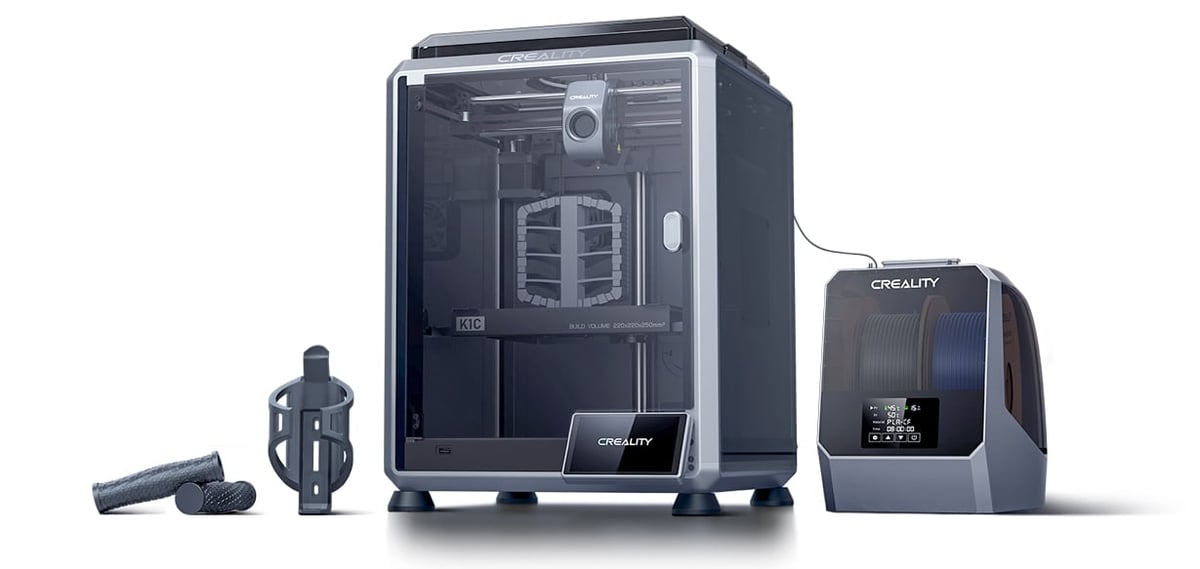
Carbon Fiber FDM
FDM 3D printing is the most accessible and versatile method for making carbon fiber parts. There are variations among printers and material types that can make all the difference in your final product.
Carbon fiber filament can be used on a wide range of FDM 3D printers as long as you use a hardened steel nozzle, but the material may vary. Filaments containing carbon fiber particles work the same way: the heat from the extruder makes the filament pliable and also aligns the embedded carbon fibers in the print direction, which gives the final print its strength and stiffness. We go into more material details in the “Best Carbon Fiber Materials” section below.
The second method of carbon fiber printing is continuous carbon fiber (CCF), which uses dual extruding nozzles. One extruder lays down a layer of continuous carbon fiber, while the other lays down a layer of another material. Together they embed the unbroken carbon fiber in the base polymer. This method creates parts that are stronger than using chopped fibers and provides a more consistent load distribution. It’s also ideal for parts that don’t require carbon fiber throughout, but, instead, reinforcement in specific areas – just on the outer wall, for example.
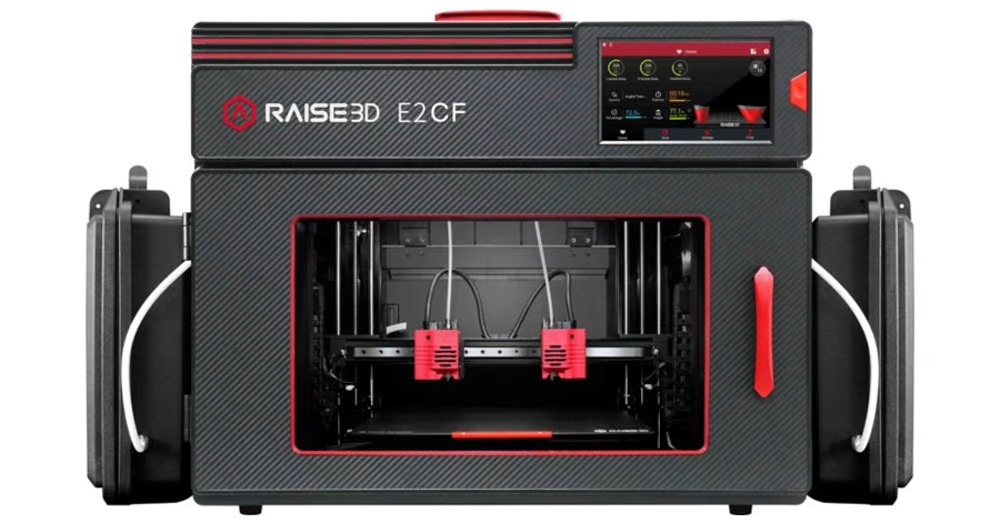
What’s very interesting about these two approaches is that, depending on infill and deposition strategy, custom material properties can be built into the part without changing its net shape. Different reinforcement strategies include shelling, fiber panel striping, ribbing, and fiber angles, among others.
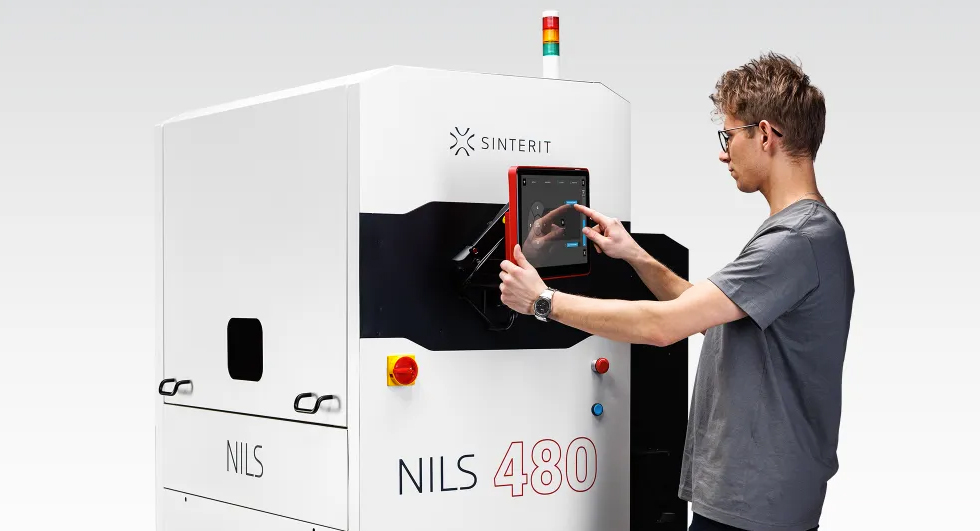
Carbon Fiber SLS
SLS 3D printing uses high-powered lasers to fuse powdered plastic material together into 3D shapes one layer at a time. It can create parts that are finely detailed, strong, durable, and heat resistant all at once. Carbon fiber nylon (CF-PA) is one of the most popular materials for SLS 3D printing and SLS is often chosen over FDM for the smooth surface finish it creates and its ability to fabricate more complex shapes.
Carbon fiber-filled nylon tends to be highly anisotropic, which means that the material properties will vary depending on part orientation during printing because the small fibers will align with how the powder is spread across the build platform. For example, tensile strength will be much higher in this direction, so part orientation is important and something your build preparation software should alert you to.
Carbon fiber SLS powders used to be expensive, but new and much more affordable benchtop machines with proprietary powders have entered the market. Check out more SLS powder details in our SLS Powder Buyer’s Guide.
Top Benefits of Carbon Fiber 3D Printing

Printing with carbon-fiber-reinforced materials is chosen over more standard materials like PLA, ABS, nylon, or PETG when superior physical properties are required. This can be the case for end-use parts but also for manufacturing rigs and jigs as well as functional prototypes.
Carbon fiber increases strength while decreasing weight, making it an ideal composite for many industries like automotive, aerospace, and sporting goods. Of course, process-specific characteristics like layer lines or dimensional accuracy will still mostly be dictated by the type of machine used.
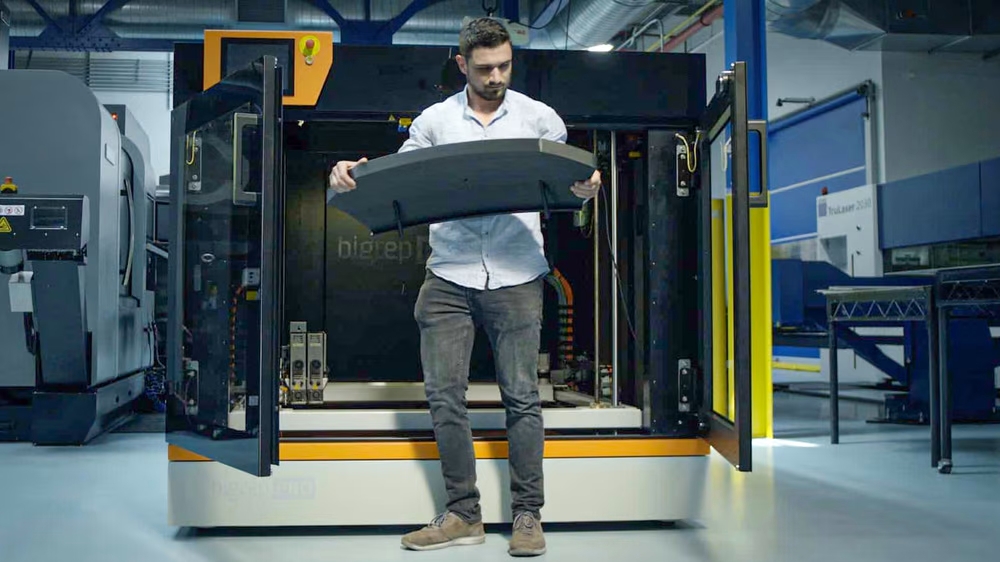
Overall, carbon fiber 3D printing is prized for:
- High strength and stiffness
- Potential metal substitute
- Exceptional dimensional stability
- Usable for end-use parts and functional prototypes
- Resistant to corrosion, heat, oil, and grease
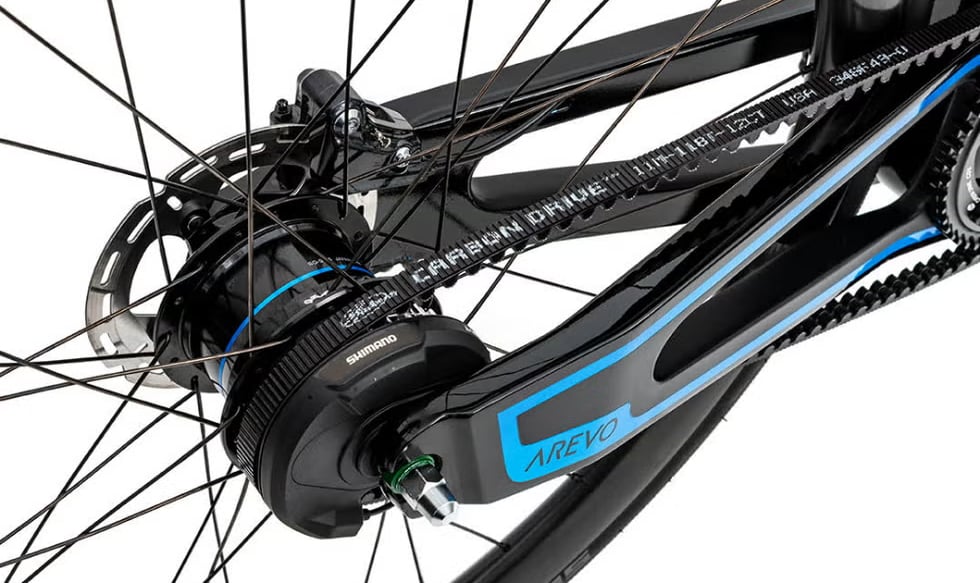
What Are the Best Carbon Fiber 3D Printers?

There’s a lot to consider when selecting a carbon fiber 3D printer. The market was once divided between professional desktop versions and larger, industrial shop-floor versions, but now includes what might be considered consumer or better yet, “pro-sumer”, desktop units, such as Bambu Lab, Qidi Tech, Prusa, and Creality. These far less expensive machines not only print with carbon-fiber infused materials, including nylon, PET, and PPS, but the manufacturers say the printers are designed for carbon-fiber because they have the required heat, thermal control, and hardened steel nozzle.
So if you can 3D print with carbon fiber filament on machines that cost only a few hundred dollars and get great results, why invest tens of thousands in a Stratasys F190CR, for example? Industrial 3D printer makers would say reliability, repeatability, and machine up-time. Here in the All3DP lab, we’ve had a near 100% print success with a Markforged Mark Two, but probably a 70% print success rate with our Bambu Lab X1E.
When shopping around, think about these aspects:
- Will carbon fiber infused materials but the most complex filament you printer with or the least?
- Is there a print profile for the specific material you need on your printer?
- What’s the uptime of the printer?
- What the success rate of prints?
- What print size and volume do you need (big parts, a lot of parts)?
- What level of detail (do you need fine channels or more general shapes)?
- Fast print speed (do you need parts in an hour or two days?)
- Part verification and traceability (need a layer-by-layer history of the build)?
We’ve selected our top desktop FDM 3D printer picks in this guide below that range from $4,750 to $75,000. Carbon fiber methods include both infused and continuous carbon fiber FDM. This guide is particularly catered to designers and manufacturers that want to build up in-house carbon fiber expertise.
If you’re interested in the best SLS 3D printers for carbon fiber, note that almost all can handle carbon fiber infused materials, so we don’t have a separate guide. Check out our guide to the best SLS 3D printers below:
If you’re ready to expand your carbon fiber 3D printing to the next level, check out our guide to industrial carbon fiber FDM machines at a price range from $40,000 up to and exceeding $250,000. Anyone looking to enter the field of industrial-scale carbon fiber production of jigs, prototypes, and end parts will find what they’re looking for on this list.
Here at All3DP, we took one of the most popular carbon fiber 3D printers for a rather extensive spin. We explored the hows and the why of continuous fiber 3D printing through the lens of hands-on experience with the Markforged Mark Two. Zero print failures and near-flawless print quality are what we’ve learned of the Mark Two in our extended time spent printing with it. Auto-support generation handles surprisingly tricky geometries well, and the support structures virtually peel away in hand. Ideally, you should design your parts to avoid needing support structures in the first place – basic design principles for 3D printing still apply here. Read more in our review below.
Best Carbon Fiber Materials

Carbon Fiber Filament
When shopping for CF filament, note the polymer into which the carbon fibers are infused (nylon, PEEK, PETG, etc.) and the amount (% by weight) of carbon fiber strands in the filament. For best results, you’ll want a material with a print profile for you specific 3D printer, to cut down on the time and effort to establish your own settings.
Carbon fibers add strength and durability to polymers with the notable exception of PLA. When the carbon fiber in PLA are chopped, there can be a boost in performance, but most carbon fiber in PLA is in powdered form. Brands use milled or powdered carbon fiber, not chopped, do it for the aesthetic appeal. The matte black surface finish of PLA with carbon fiber almost completely absorbs light and has the effect of hiding layer lines at 0.2 mm layer height.
The higher the percentage of carbon fiber in the filament, arguably, the better the reinforcement. The most common amount is 20% carbon fiber.
Below we compare the mechanical properties of PET from Ultrafuse versus UltiMaker’s CF-PET. You can see a clear boost in tensile strenth, impact strength stiffness, and elongation.
*test method ASTM D3039, ISO 527
To take a brief look at how carbon fibers can affect a nylon material’s mechanical properties, a good example is the nylon collection from filament maker 3DXTech: AmideX Nylon 6-66 copolymer and CarbonX PA6+CF Gen 3. Here, you can see better tensile strength but a lower elongation so note that carbon fibers aren’t a boost to all mechanical properties. There are always trade offs.
If you’re getting started with CF 3D printing, you don’t need to scour the filament shops for the best CF filament. Just check out our guide below:
If you’re looking to move up to industrial CF 3D printing, you may not have a choice of filament. Many professional and industrial 3D printers only work with that brand’s CF filament. This fact is especially true for continuous carbon fiber materials, which can only be processed by specialized machines as they require hardware that lays out and cuts the continuous carbon fiber strand that’s being incorporated into the base material.
How Much Does Carbon Fiber Filament Cost?
This, of course, depends on many factors. On the low end, a 1-kilogram spool of CFF filament will set you back about $50. That’s not too far off from standard filaments in the professional desktop FDM world. Of course, this price can explode quickly, with an 800-gram spool of Markforged’s Onyx filament retailing at $230.
There is a lot of variety out there when it comes to carbon fiber 3D printing, and prices can quickly ramp up when the spool needs to be accompanied by specialized printers, so make sure you understand precisely what requirements your parts need to fulfill to not fall into a carbon-black money pit.
Carbon Fiber Pellets
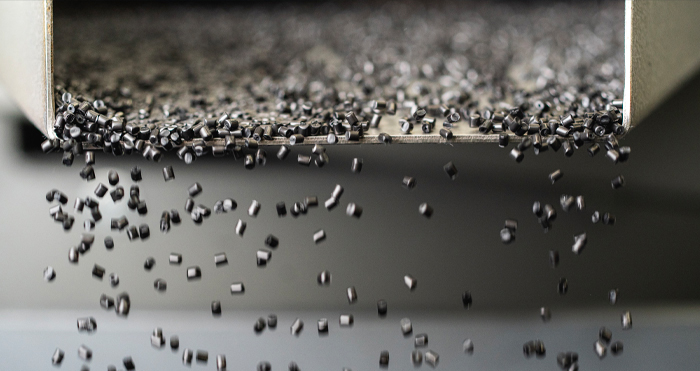
For extrusion (FDM) 3D printers that are equipped with a pellet hopper and a special pellet extruder, carbon fiber materials are also an option. These 3D printers can use the same carbon fiber polymer materials used in injection molding, which generally lowers the price of your feedstock. Pellet 3D printers are typically used for large-format 3D printing when you’ll be using a lot of material. Some extruders can also be fitted to the end or a robotic arm for making extra-large parts.
As with filament FDM, only printers with extruders that can get hot enough, can effectively manage carbon fiber.
Carbon Fiber Polymer Powder
Although we won’t go into all the fine details of CF polymer powders here, know that how the fibers are mixed with the polymer powder makes a difference.
For example, benchtop SLS system manufacturers Formlabs and Sinterit both offer a PA 11 nylon mixed with carbon fibers that are loosely distributed among the polymer granules. This leads to powder recoater direction alignment and, ultimately, anisotropic profiles, as we mentioned above. This type of added carbon fiber can vastly improve the tensile strength of PA in one direction but actually be detrimental to part performance in other aspects. Make sure you consider this when designing and preparing your model for printing.
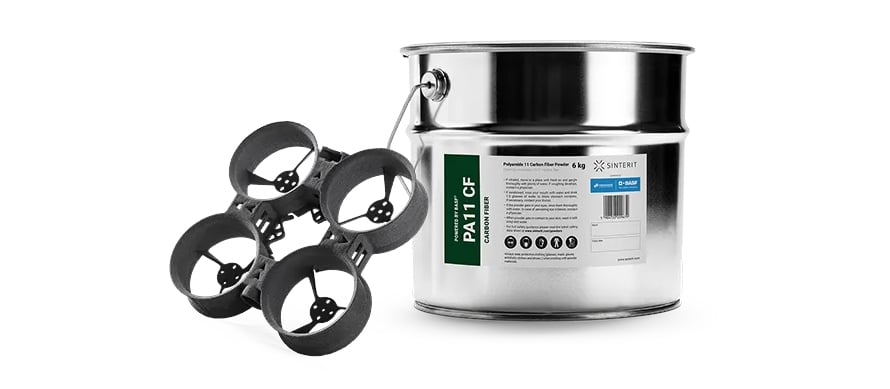
Now take a look at industrial-grade SLS carbon fiber powders, like the one from EOS called HT-23. Here, the 23% carbon fibers are bound up with the polymer granules producing a more uniform strength in the X, Y, and Z-direction. This material, however, is at the top end of powders both in performance and price and can really only be handled by one of two specialized high-temperature EOS systems, the P450 and P810.
How Much Does Carbon Fiber Polymer Powder Cost?
SLS powders are generally more expensive, as the previously mentioned Formlabs PA 11 CF and Sinterit PA 11 CF with prices around $1,000 per 6 kg unit show. EOS won’t even openly disclose their price for the HT-23 powder, which is never a good sign when it comes to bargain hunting.
Recycling Carbon Fiber
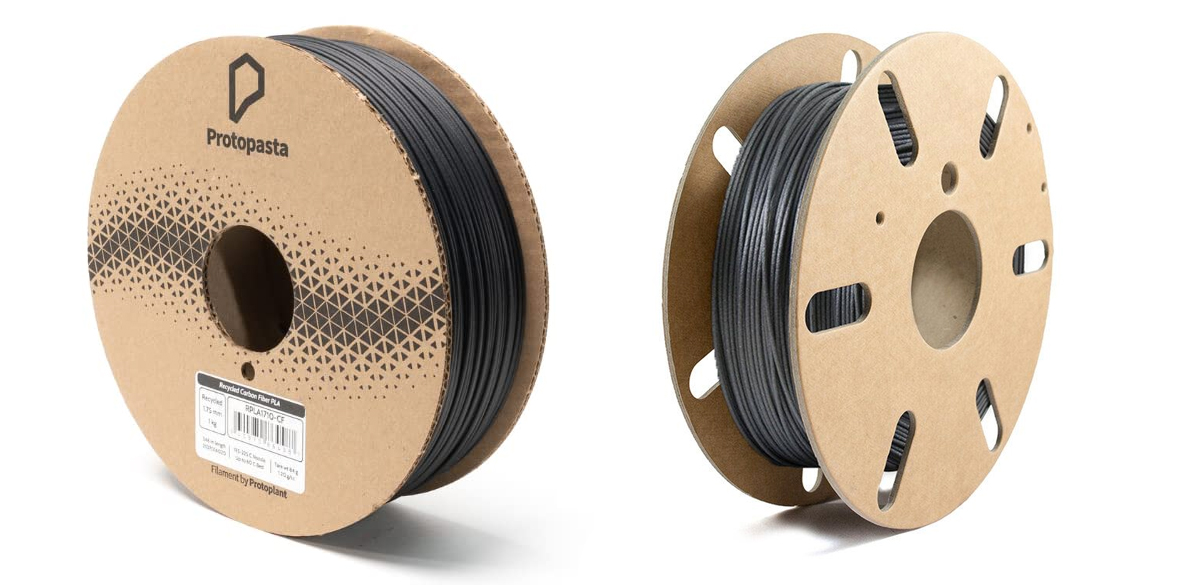
Is Carbon Fiber Harmful & Toxic?
In addition to the typical hazards in 3D printing of thermal burns from molten plastic or hot machine parts, there are also material-specific risks associated with carbon fiber as a 3D printing material.
Unsurprisingly, airborne microscopic carbon fibers, as they may appear when roughly handling carbon fiber-reinforced SLS powder, are not something you want in your lungs, potentially leading to irritation and respiratory problems. Adequate workspace ventilation and personal protective equipment, including gloves and masks are absolutely necessary.
In the case of infused and continuous carbon fibers, this risk is minimized. However, smoke and fumes from molten material are still a health concern. Since the carbon fibers are often combined with petroleum-based plastics, such as nylon (PA12), ABS, or PETG, health precautions for those materials apply and adequate ventilation in addition to the use of protective gear to avoid inhaling aerosols and VOCs are recommended.
Order Carbon Fiber 3D Printed Parts

Carbon fiber 3D printers can range in price from a few thousand to hundreds of thousands of dollars. Luckily, to get your hands on a carbon-fiber-printed part, you don’t need to own a printer.
3D printing service providers can print components for you at affordable prices. They also offer advice on which material and technology are best for your use case. They’re a great option when the number of required parts doesn’t warrant the initial investment or you simply want to try out the many options.
Despite being the ideal material for durable parts, carbon-fiber-infused materials are not offered by most service providers. It is true that nylon without added carbon fiber can be strong enough for many industrial applications, but the added strength of the fibers is driving the sale of carbon fiber materials and 3D printers worldwide, so hopefully, more service bureaus will catch up to demand.
Craftcloud, allows you to compare and choose from more than 150 manufacturers across the globe. There is no minimum order requirement and all you need to do is upload your CAD model, pick your material and finish, and find a quote that works best for you. The quotes are generated instantaneously in real-time and don’t include any hidden fees.
For carbon fiber parts, Craftcloud lists an extensive library of materials. Options include anything from carbon-fiber-infused filaments mixed with PETG, PLA, ABS, nylon, polycarbonate, and PEEK to proprietary materials like Markforged Onyx and Extrudr GreenTEC Pro Carbon. CCF filaments in nylon and PETG as well as carbon-fiber-reinforced nylon SLS powders are also offered to be used for functional prototypes, jigs, and end-use parts.
Software for Carbon Fiber 3D Printers

All 3D printers require operating software to turn your digital model into instructions for the machine to follow. If you’ve used filament 3D printers, you’d be familiar with the concept. In the case of chopped fiber filament printing, the software that accompanies your desktop machine will generally be able to get the job done, provided your printer meets the filament’s specifications.
With more advanced materials and technologies, standard slicing software may not work, simply because it is not designed to allow for material-specific parameters like carbon fiber reinforcement strategies.
One example of a carbon-fiber specific piece of software is Markforged’s file preparation and management software called Eiger. As of recently, the software incorporates virtual testing through simulation. Instead of testing part strength after the fact, this tool now offers a smart carbon fiber reinforcement validation and optimization workflow before printing and with the push of a button.
Lead image source: All3DP
License: The text of "The Complete Guide to Carbon Fiber 3D Printing" by All3DP Pro is licensed under a Creative Commons Attribution 4.0 International License.







